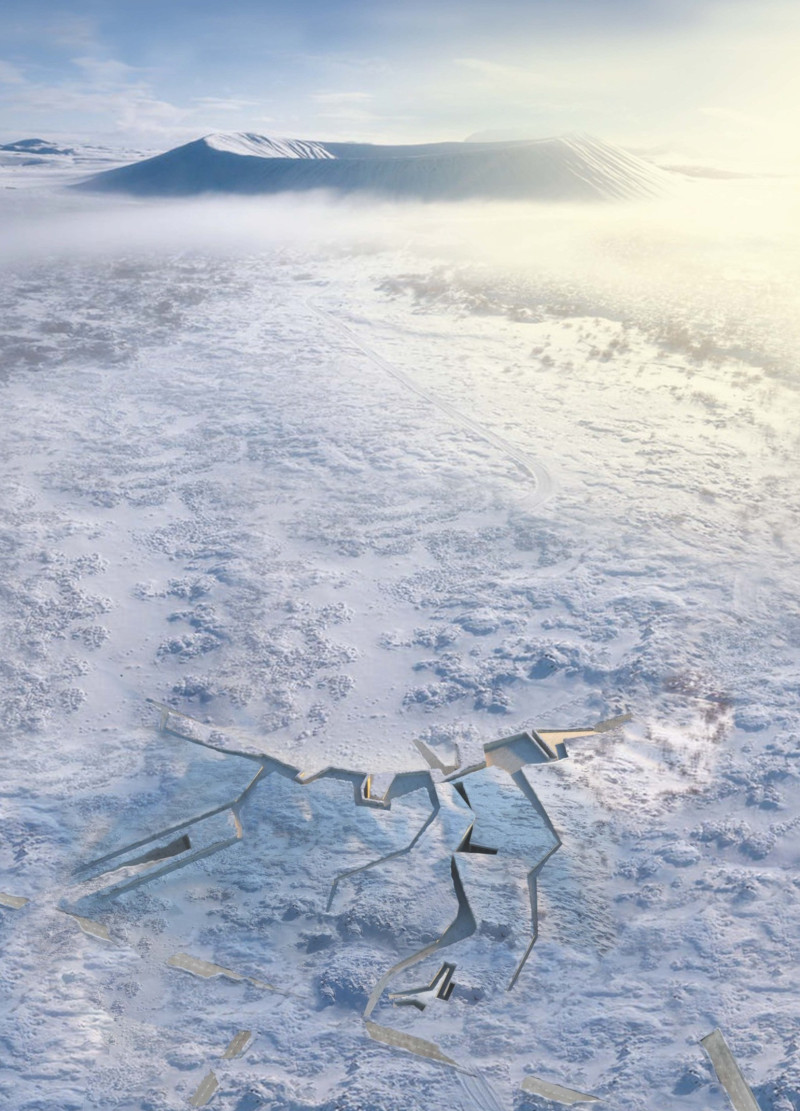5 key facts about this project
The primary function of "Lost in Landscape" is to enhance the visitor experience through engagement with both the landscape and the architecture itself. Designed as a journey, the project guides visitors through a sequence of spaces that inspire exploration and reflection. The architectural elements are carefully positioned to encourage interaction with nature, whether through panoramic glass facades or green roofs that blend organically with the terrain.
The project's architecture embodies a minimal intervention philosophy, which is evident in its use of natural materials like concrete, glass, wood, and vegetation. Each material is selected not only for its functional properties but also for its ability to resonate with the surrounding environment. The strategic use of concrete allows for robust structural integrity while the expansive glass elements enhance connectivity with the landscape. The green roofs not only contribute to sustainability but also strengthen ecological relationships by promoting biodiversity.
The design features a southern entrance that acts as a portal into the subterranean world, creating an experience akin to navigating through natural caves. This pathway meanders gently, transitioning into spacious interior areas characterized by high ceilings and walls of glass. This integration of light and space cultivates a sense of openness and alignment with Iceland's striking natural views.
Unique to "Lost in Landscape" is its interior design, which incorporates dedicated spaces for experiencing events such as viewing the Northern Lights. This aspect of the design underscores the project's commitment to engaging visitors with specific natural phenomena unique to the region, establishing an intimate connection between architecture and the surrounding cultural context.
The design also reflects a focus on sustainability. Incorporating geothermal heating systems and rainwater harvesting not only reduces the overall environmental impact but also aligns with Iceland’s commitment to renewable energy. The project redefines the relationship between architecture and the environment by placing emphasis on ecological stewardship without compromising aesthetic and experiential quality.
For further technical insights and details about this project, including architectural plans, architectural sections, and architectural ideas, readers are encouraged to explore the full project presentation. Engaging with these elements will provide a more comprehensive understanding of "Lost in Landscape" and its distinctive architectural philosophy.


























